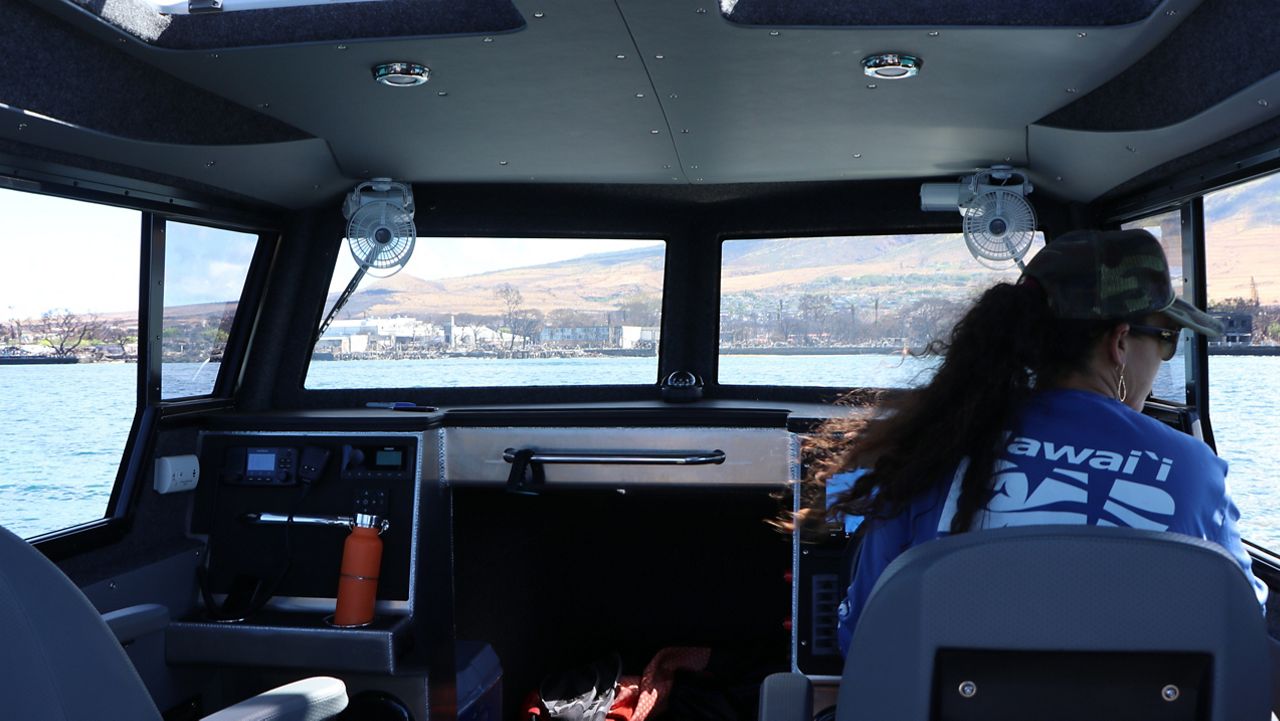LAHAINA, Hawaii — The Department of Land and Natural Resources is collecting data about water quality in the Lahaina Small Boat Harbor in order to determine impacts on the reefs and marine life, according to a news release.
Officials are concerned about toxins released by the Aug. 8 Lahaina wildfire, which may enter the ocean as runoff.
Russell Sparks, an aquatic biologist with the DLNR Division of Aquatic Resources, said, based on visual observation, that “the water quality inside the harbor is horrible. You can see it from the surface. There’s a constant sheen of diesel and other pollutants. DAR is concerned with accumulating micro-debris, including pieces of fiberglass, degrading marine resources if not removed. After all the vessels and debris are removed, the harbor will probably need some careful dredging just to prevent these contaminants from slowly and continuously releasing out onto the reef.”
DLNR is using three sampling instruments borrowed from the U.S. Geological Survey to gather information from the waters off the fire-ravaged Lahaina. Last week, DAR placed the devices in the water near the Lahaina Small Boat Harbor and Mala Wharf at a depth of about 20 feet.
“The devices allow pollutants and toxins like heavy metals and pharmaceuticals to slowly slip inside a membrane and accumulate over time. This mimics what a living creature like coral or fish would absorb. When the samples are analyzed, we’ll have a much better idea of what the reefs are being exposed to as a result of this fire,” said Sparks.
The initial samples will create a baseline. The devices will collect data over the next two years.
“During clearing and debris removal from Lahaina and after any heavy rainfall events, we’ll get a better sense of what’s entering the system and where it’s going,” Sparks said.
DLNR will also share the data with the Hawaii Department of Health, the Environmental Protection Agency, and other agencies who want to understand how the contaminants in the water might impact people.
Michelle Broder Van Dyke covers the Hawaiian Islands for Spectrum News Hawaii. Email her at michelle.brodervandyke@charter.com.



